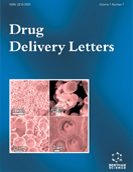Abstract
Electropermeabilization is one of the non-viral methods successfully used to transfer genes into living cells invitro and in-vivo. Although this method shows promises in the field of gene therapy, very little is known about the basic processes supporting plasmid DNA transfer. In contrast to small molecules that have direct access to the cytoplasm, plasmid DNA forms a long-lasting complex with the permeabilized membrane. The present letter reports the semi-quantitative analysis of the effect of electric pulse intensity on plasmid DNA/membrane interaction at the single-cell level using fluorescence microscopy. The raising of electric field intensity induces an increase in the cellular perimeter of plasmid DNA/membrane interaction and in the total number of plasmid DNA complexes. The increase in the perimeter of plasmid DNA/membrane interaction is in good agreement with the theoretical perimeter of membrane permeabilization. This theory easily explains the quantitative increase in plasmid DNA and gives explanations for the success of electro-mediated gene delivery.
Keywords: Electropermeabilization, gene delivery, pDNA/membrane interaction, electric field intensity, plasmid DNA, immobilization, pDNA Staining
Drug Delivery Letters
Title:Effect of Electric Field Intensity on Plasmid DNA/Membrane Interaction during In-Vitro Gene Electrotransfer
Volume: 2 Issue: 1
Author(s): Jean-Michel Escoffre, Elisabeth Bellard, Emilie Phez, Marie-Pierre Rols and Cyril Favard
Affiliation:
Keywords: Electropermeabilization, gene delivery, pDNA/membrane interaction, electric field intensity, plasmid DNA, immobilization, pDNA Staining
Abstract: Electropermeabilization is one of the non-viral methods successfully used to transfer genes into living cells invitro and in-vivo. Although this method shows promises in the field of gene therapy, very little is known about the basic processes supporting plasmid DNA transfer. In contrast to small molecules that have direct access to the cytoplasm, plasmid DNA forms a long-lasting complex with the permeabilized membrane. The present letter reports the semi-quantitative analysis of the effect of electric pulse intensity on plasmid DNA/membrane interaction at the single-cell level using fluorescence microscopy. The raising of electric field intensity induces an increase in the cellular perimeter of plasmid DNA/membrane interaction and in the total number of plasmid DNA complexes. The increase in the perimeter of plasmid DNA/membrane interaction is in good agreement with the theoretical perimeter of membrane permeabilization. This theory easily explains the quantitative increase in plasmid DNA and gives explanations for the success of electro-mediated gene delivery.
Export Options
About this article
Cite this article as:
Escoffre Jean-Michel, Bellard Elisabeth, Phez Emilie, Rols Marie-Pierre and Favard Cyril, Effect of Electric Field Intensity on Plasmid DNA/Membrane Interaction during In-Vitro Gene Electrotransfer, Drug Delivery Letters 2012; 2 (1) . https://dx.doi.org/10.2174/2210304x11202010022
| DOI https://dx.doi.org/10.2174/2210304x11202010022 |
Print ISSN 2210-3031 |
| Publisher Name Bentham Science Publisher |
Online ISSN 2210-304X |
 17
17
- Author Guidelines
- Bentham Author Support Services (BASS)
- Graphical Abstracts
- Fabricating and Stating False Information
- Research Misconduct
- Post Publication Discussions and Corrections
- Publishing Ethics and Rectitude
- Increase Visibility of Your Article
- Archiving Policies
- Peer Review Workflow
- Order Your Article Before Print
- Promote Your Article
- Manuscript Transfer Facility
- Editorial Policies
- Allegations from Whistleblowers
Related Articles
-
Novel Agents in the Management of Lung Cancer
Current Medicinal Chemistry The Ultrasonographic Diagnosis of Polycystic Ovary Syndrome
Current Medical Imaging Making the Most of Pathological Specimens: Molecular Diagnosis in Formalin-Fixed, Paraffin Embedded Tissue
Current Drug Targets Metabolic and Functional Brain Mapping, Connectivity and Plasticity Applied to the Surgery of Cerebral Tumors
Current Medical Imaging Patented Biomarker Panels in Early Detection of Cancer
Recent Patents on Biomarkers Signaling Pathways Involved in Antidepressant-Induced Cell Proliferation and Synaptic Plasticity
Current Pharmaceutical Design Management of Vaginal Cancer
Reviews on Recent Clinical Trials Molecular and Cellular Activities of Vitamin E Analogues
Mini-Reviews in Medicinal Chemistry Targeting Protein Tyrosine Phosphatases for Anticancer Drug Discovery
Current Pharmaceutical Design Patent Selections
Recent Patents on Biomarkers Eph/ephrin Signaling as a Potential Therapeutic Target After Central Nervous System Injury
Current Pharmaceutical Design Targeting Cancer Stem Cells with Repurposed Drugs to Improve Current Therapies
Recent Patents on Anti-Cancer Drug Discovery Multidisciplinary Approach to Patient with Malignant Melanoma
Anti-Cancer Agents in Medicinal Chemistry Actinium-225 in Targeted Alpha-Particle Therapeutic Applications
Current Radiopharmaceuticals Lumiflavin Enhances the Effects of Ionising Radiation on Ovarian Cancer Stem-Like Cells by Inhibiting Autophagy
Anti-Cancer Agents in Medicinal Chemistry Discovery of New Biomarkers of Cancer Using Proteomics Technology
Current Cancer Therapy Reviews Preterm Birth and the Risk of Neurodevelopmental Disorders - Is There a Role for Epigenetic Dysregulation?
Current Genomics Zinc Dependent Histone Deacetylase Inhibitors in Cancer Therapeutics: Recent Update
Current Medicinal Chemistry Dual Role of Heat Shock Proteins (HSPs) in Anti-Tumor Immunity
Current Molecular Medicine APO2L/TRAIL: New Insights in the Treatment of Autoimmune Disorders
Recent Patents on Inflammation & Allergy Drug Discovery


























